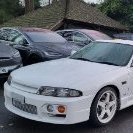Automatic Transmission Shift Kit. - Updated Oct 2006
Announcements
-
Similar Content
-
Latest Posts
-
By Last Phantom · Posted
I found a supplier for an arm in NZ. https://thrashgaragenz.com/products/nissan-skyline-v35-z33-350z-front-lower-straight-arm-rh-side?srsltid=AfmBOopMdfCFDc_8yVZZ9kq5nIngPHRTBzUU8v4SAptJaRO52Wjs0bC6 I looked closely at the photo of that one and the Z1 arm, and it's the same bloody arm. Scratches all match in the photo 😂 How hard is it to change that joint? Also they seem to be listing two options https://thrashgaragenz.com/products/nissan-skyline-v35-z33-350z-front-lower-straight-arm-balljoint-rh-side?_pos=1&_sid=229acde44&_ss=r And now I have no idea what size I'd need yay -
Ill review it again, from memory when I first saw some of Trailer Park Boys I wasn't a huge fan. I ended up at Letter Kenny after watching Shoresy, which is a bit ass backward, ha ha
-
"lol dunno" either But like you, I can't see any reason they would need to be different LHD to RHD




Recommended Posts